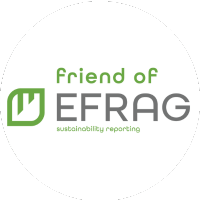
The CSRD is set to revolutionize ESG reporting. What exactly is it, who will be impacted, what will be required and when does it take effect? Here’s everything you need to know.
What is the CSRD?
The CSRD, or Corporate Sustainability Reporting Directive, is an EU legislation proposed in April 2021 by the European Financial Reporting Advisory Group (EFRAG). Over the next few years, it will gradually replace and build upon the existing Non-Financial Reporting Directive (NFRD) that has been in effect since 2018. Similar to the NFRD, the CSRD outlines reporting obligations for companies regarding environmental, social, and governance (ESG) aspects. Its objective is to substantially broaden the scope of the NFRD, expanding both the reporting entities and the required reporting content.
Who is affected by the CSRD?
The CSRD will significantly expand its coverage compared to the NFRD, impacting approximately 50,000 companies, a substantial increase from the previous 11,000 that were previously impacted. In addition to the organizations already subject to the NFRD, the CSRD will affect all EU-based companies that meet at least two of the following criteria:
- Net turnover of €40 million or more.
- Assets totaling at least €20 million.
- Workforce of 250 employees or more.
Non-European companies are also subject to CSRD requirements if they generate a net turnover of €150 million and possess at least one subsidiary or branch in the EU that surpasses specific thresholds.
What will companies be required to report?
The CSRD introduces a list of additional reporting requirements beyond the existing NFRD requirements, including:
- Adopting a double materiality approach to identify ESG risks and opportunities that affect the business and the business’s impacts on people and the planet.
- Integrating ESG disclosures into both financial and management reporting.
- Providing more comprehensive information aligned with the EU Taxonomy and European Sustainability Reporting Standards (ESRS). This entails retrospective and forward-looking data on targets and progress, due diligence processes, policies and procedures throughout the value chain, risk management and controls, and more.
- Mandatory third-party audit (assurance) for the reported information.
- Assurance regarding alignment with the ESRS.
- Digitally tagging the reported information to facilitate its integration into the European Single Access Point (ESAP) database. Further specifics on this will be available upon the release of the ESRS standards.
What is the timeline for Implementation?
The application of the regulation will take place in four phases, which have been outlined below:
- Large Public Interest Entities
-
-
- Report Expected 2025
- Large public-interest entities with >500 employees (already subject to the NFRD)
- Reporting Period: FY starting on or after January 1, 2024
-
- Large Public Interest Entities
-
- Report Expected 2026
- Large EU entities that meet 2 out of 3 criteria:
- >250 employees
- >€20M in assets
- >€40M net turnover
- Reporting Period: FY starting on or after January 1, 2025
- Listed SMEs
-
-
- Report Expected 2027
- Listed SMEs will be subject to certain reporting requirements. They can choose to opt-out until 2028 but this is not recommended.
- Reporting Period: FY starting on or after January 1, 2026
-
- Non-EU Entities
-
- Report Expected 2029
- Entities with an EU presence with >€150M turnover in the EU and at least one subsidiary or branch with a net turnover >€40M in the EU
- Reporting Period: FY starting on or after January 1, 2028



